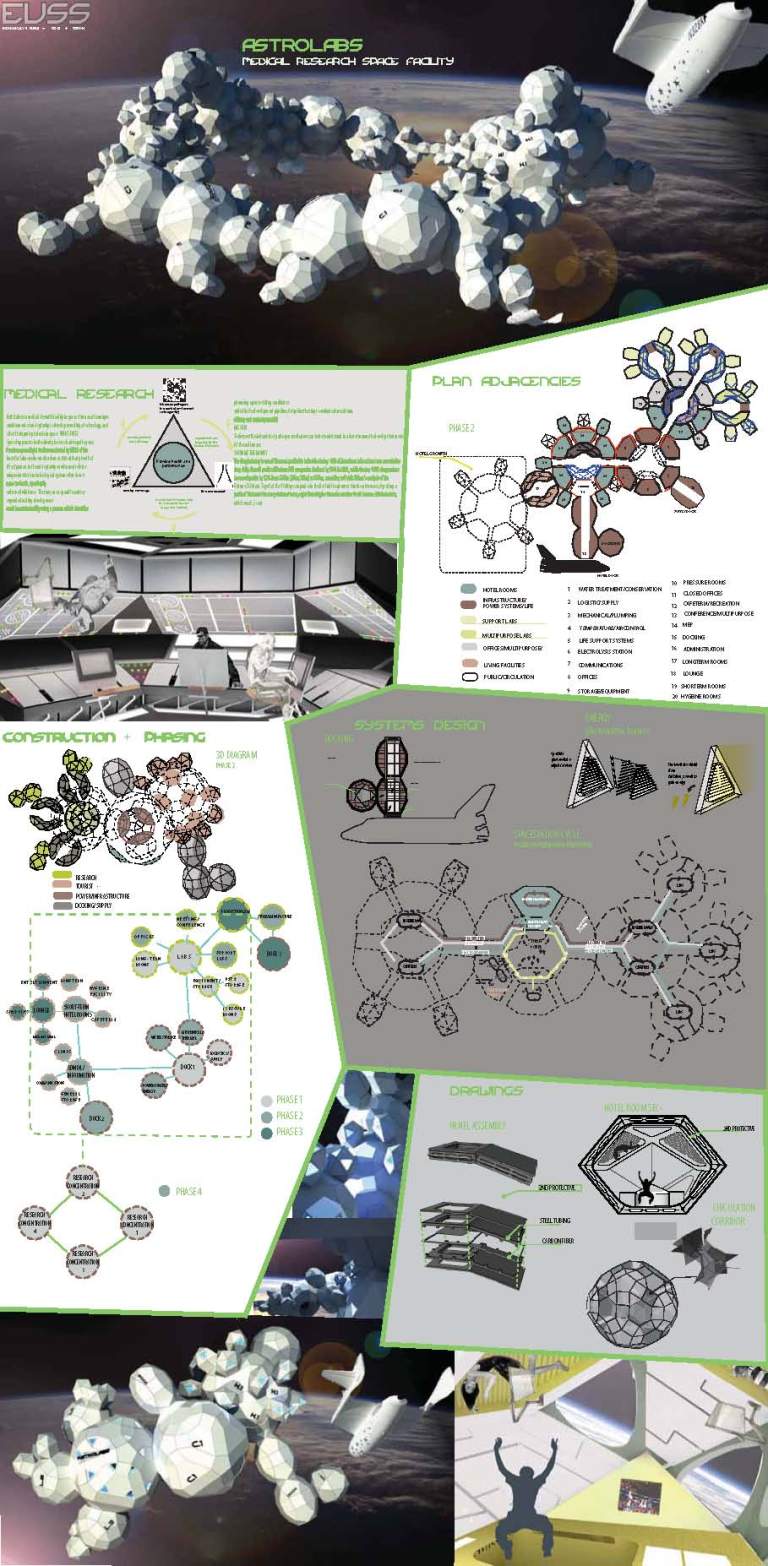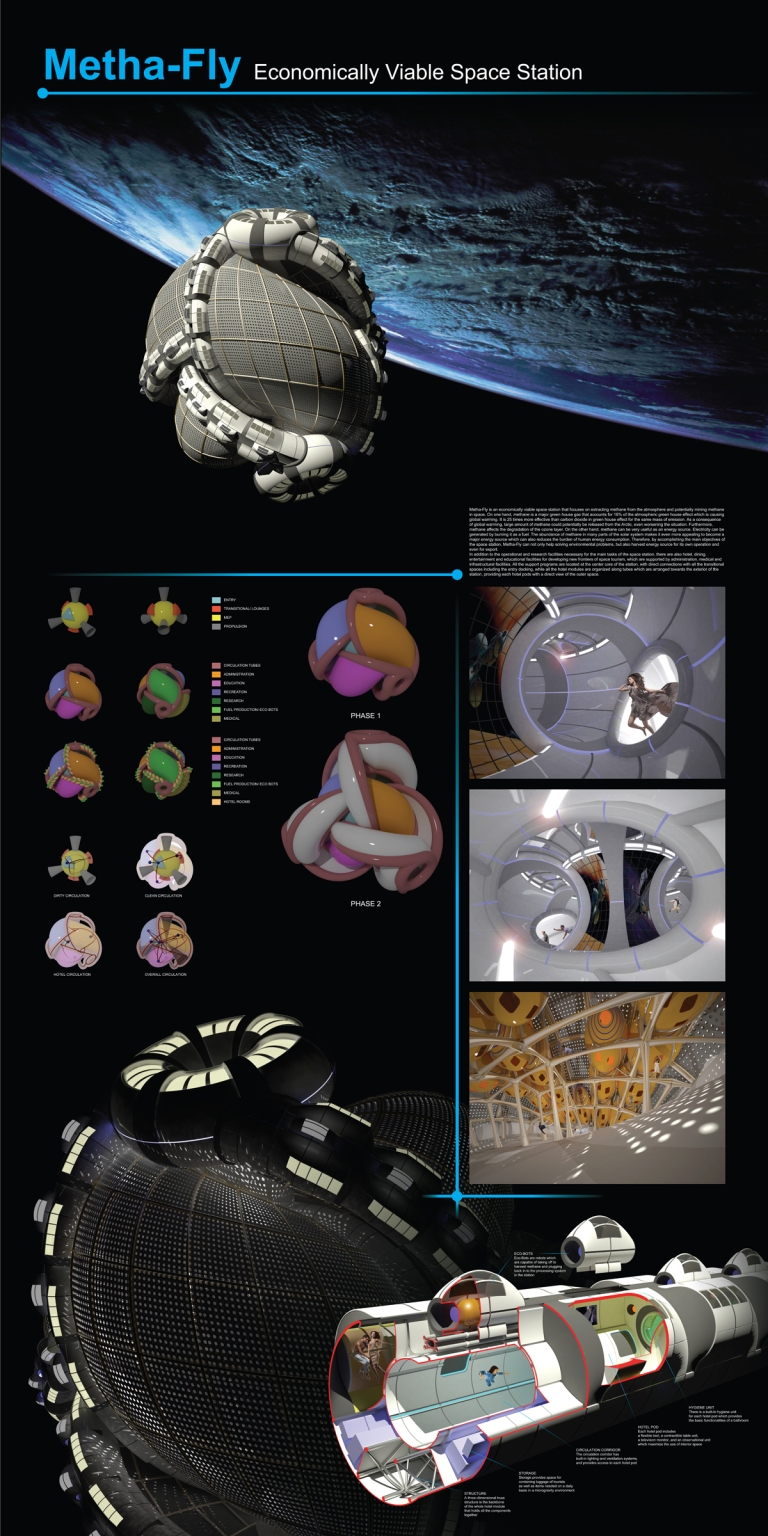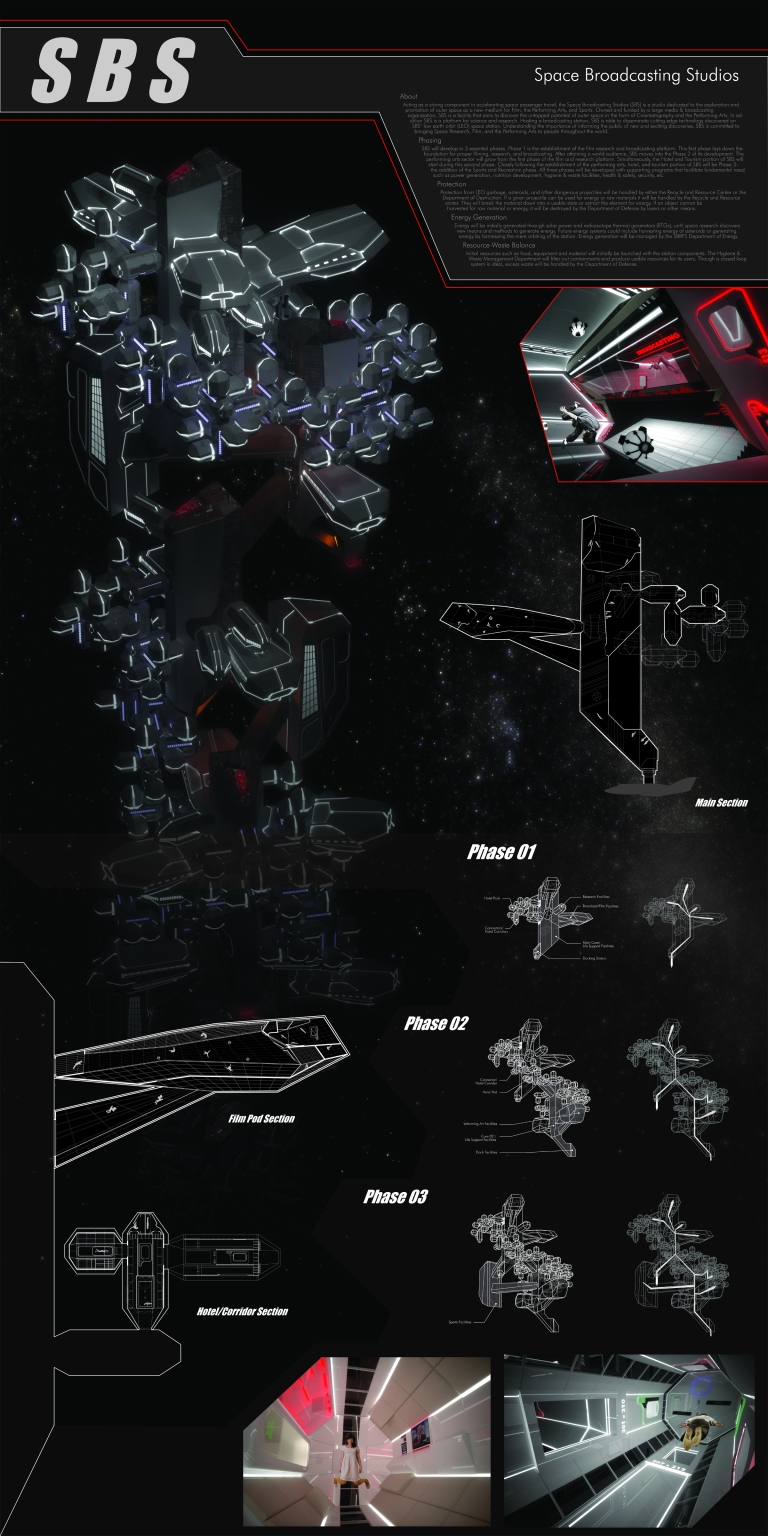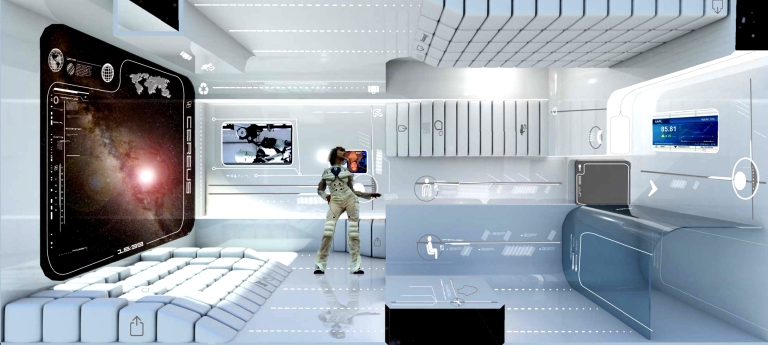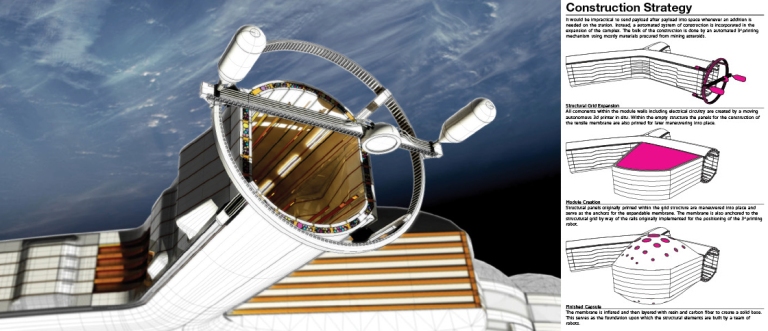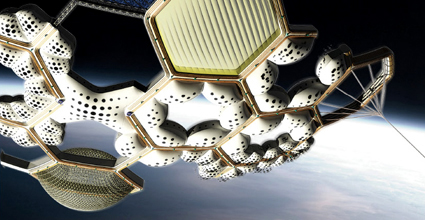Economically Viable Space Station
The focus is to allow architecture students to make contributions to the conceptual design for an economically viable space station. Currently several private companies are realistically pursuing low-Earth orbit commercial space station projects that may come to fruition in the near future. The project will investigate and integrate current commercial space tourism proposals. Heavy emphasis will be placed on programming to make a commercial orbital station economically workable. Students may explore designs at either LEO (Low Earth Orbit) or GEO (Geostationary Orbit). Designs in LEO will include commercial passenger travel, leading to resort destinations and associated services; and those in GEO will include commercial business travel, leading to construction projects such as SPS (Satellite Power Station Construction). Both need crews onsite; both need a variety of services; both can support tourism.
The designs will strongly consider real issues of designing in space including safety, gravity, air pressure etc. With this in mind issues of materials, connections and human interactions will be paramount. Interactive issues will be explored focusing on how the structure responds in an adaptable way to intelligently automate response to changing circumstances. Students will explore and demonstrate hyper – efficient architectural design which includes human and environmental interactions, sociology and psychology. Students will program their designs to be commercially viable solutions. Students will work individually or in teams of two to produce complete designs including the detailed development and a construction/ fabrication concept. Students will develop scaled prototypes of their systems that can successfully demonstrate the robotic aspects of the project as integrated into the designs to optimize the performative aspects in terms of energy, safety and robustness. Physical models will demonstrate actual robotics, structure and materials. Issues of embedded computational control structures, and kinetic engineering are therefore paramount. The environment in space will be seriously considered including: gravity, pressure, radiation, and the mass balance of resources and waste required for accommodating human life in space.
The Project has Five Primary Technical Considerations including: The actual trajectory issues (how to get building materials to space), Space Manufacturing (how to fabricate and assemble/construct in space) Human Factors (including ergonomics and programming), Safety (ranging from protection of debris and resource utilization) and Growth (including adaptability and expansion). Of the central issues explored in this studio, we will concentrate on Manufacturing as a process carried out by small modular robotics. The premise of the approach is that rather than sending a constructed architecture to space, we send small robotic modules that are capable of reproducing through automated fabrication techniques using in-situ materials. When enough of architecture of the hotel has constructed itself with minimal human intervention – we send humans to inhabit it.




